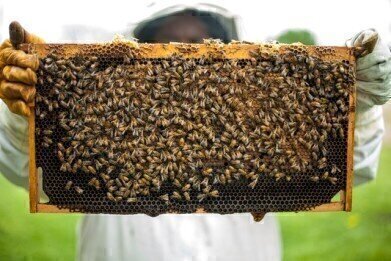Mass Spectrometry & Spectroscopy
Can Bees Do Maths?
Apr 07 2019
A recent revelation from researchers at the Royal Melbourne Institute of Technology (RMIT) University suggests that honeybees are actually much smarter than we may think, with the ability to solve basic arithmetic calculations.
Originally, researchers discovered that honeybees had the ability to understand the concept of zero, identifying images displaying the fewest number of elements and recognising that nothing was less than one.
Following on from this, they focused on understanding whether bees could perform mathematic operations, such as addition and subtraction. Read on as we take a closer look at the research and how it could help other areas of science.
Teaching bees to count
To solve mathematical problems, you need a sophisticated level of cognition and the ability to understand the complex mental management of numbers, long-term rules and short-term working memory. RMIT University researchers discovered that bees can be taught to identify colours as symbolic representations of add and subtract, using this information to solve basic arithmetic problems.
RMIT’s Associate Professor Adrian Dyer says the bees “used their short-term memories to solve arithmetic problems, as they learned to recognise plus or minus as abstract concepts rather than being given visual aids”. He added that the research findings “suggest that advanced numerical cognition may be found much more widely in nature among non-human animals than previously suspected”.
School for bees
PhD researcher Scarlett Howard conducted the experiment, which involved training individual honeybees to visit a Y-shaped maze, in which they received sugar water when making the right choice. If an incorrect decision was made, the bees were given a bitter quinine solution, teaching them to associate the right answers with a sweet reward.
Naturally, honeybees will go back to a specific page if they find a good source of food and so they continued to return to the maze to collect nutrition, and simultaneously furthered their learning. The entrance to the maze held between 1 and 5 shapes, that were either blue – which meant the bee had to add – or yellow – subtract. After seeing the initial number, the bee would fly into a decision chamber, in which it could go either left or right – one side having a correct solution and the other incorrect. Eventually, after over 100 learning trials, the bees learnt that blue meant plus 1 and yellow meant minus 1, which they could then apply to the new numbers.
Moving forward
According to Howard, the findings “show that the complex understanding of maths symbols as a language is something that many brains can probably achieve” and is a huge step towards understanding how to teach artificial intelligence (AI) problem solving and arithmetic skills.
In turn, this could assist in all kinds of research, from creating automated systems for medical diagnosis to determining hazardous substances in a range of environments.
Digital Edition
Lab Asia 31.2 April 2024
April 2024
In This Edition Chromatography Articles - Approaches to troubleshooting an SPE method for the analysis of oligonucleotides (pt i) - High-precision liquid flow processes demand full fluidic c...
View all digital editions
Events
Apr 28 2024 Montreal, Quebec, Canada
May 05 2024 Seville, Spain
InformEx Zone at CPhl North America
May 07 2024 Pennsylvania, PA, USA
May 14 2024 Oklahoma City, OK, USA
May 15 2024 Birmingham, UK


















